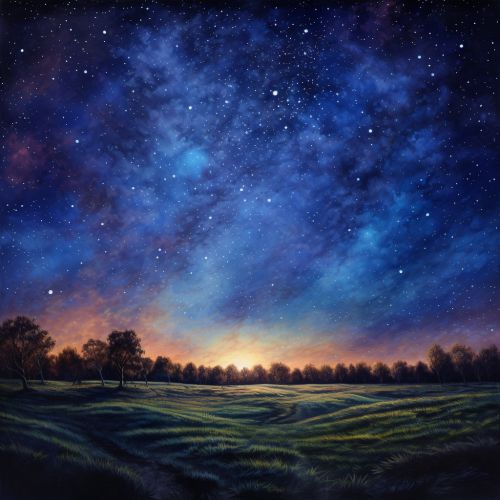Cosmic Microwave Background Radiation
Introduction
The Cosmic Microwave Background (CMB) is a faint cosmic background radiation filling all space. It is an important source of data on the early universe because it is the oldest electromagnetic radiation in the universe, dating to the epoch of recombination. With a traditional optical telescope, the space between stars and galaxies (the background) is completely dark. However, a sufficiently sensitive radio telescope shows a faint background noise, or glow, almost isotropic, that is not associated with any star, galaxy, or other object. This glow is strongest in the microwave region of the radio spectrum. The accidental discovery of the CMB in 1965 by American radio astronomers Arno Penzias and Robert Wilson was the culmination of work initiated in the 1940s, and earned the discoverers the 1978 Nobel Prize.


Discovery and identification
The discovery of CMB is landmark evidence of the Big Bang origin of the universe. When the universe was young, before the formation of stars and planets, it was denser, much hotter, and filled with a uniform glow from a white-hot fog of hydrogen plasma. As the universe expanded, both the plasma and the radiation filling it grew cooler. When the universe cooled enough, protons and electrons combined to form neutral hydrogen atoms. Unlike the uncombined protons and electrons, these atoms could not absorb the thermal radiation, and so the universe became transparent instead of being an opaque fog.
Characteristics
The CMB has a thermal black body spectrum at a temperature of 2.72548±0.00057 K. The spectral radiance dEν/dν peaks at 160.23 GHz, in the microwave range of frequencies, corresponding to a photon energy of about 6.626 × 10−4 eV. Alternatively, if spectral radiance is defined as dEλ/dλ, then the peak wavelength is 1.063 mm (282 GHz, 1.168 × 10−3 eV photons). The glow is very nearly uniform in all directions, but the tiny residual variations show a very specific pattern, the same as that expected of a fairly uniformly distributed hot gas that has expanded to the current size of the universe. In particular, the spectral radiance at different angles of observation in the sky contains small anisotropies, or irregularities, which vary with the size of the region examined. They have been measured in detail, and match what would be expected if small thermal variations, generated by quantum fluctuations of matter in a very tiny space, had expanded to the size of the observable universe we see today. This is a very active field of study, with scientists seeking both better data (for example, the Planck spacecraft) and better interpretations of the initial conditions of expansion. Although many different processes might produce the general form of a black body spectrum, no model other than the Big Bang has yet explained the fluctuations. As a result, most cosmologists consider the Big Bang model of the universe to be the best explanation for the CMB.
Anisotropies and large scale structure
The detailed, all-sky picture of the infant universe created from nine years of WMAP data. The image reveals 13.77 billion year old temperature fluctuations (shown as color differences) that correspond to the seeds that grew to become the galaxies. The signal from our galaxy was subtracted using the multi-frequency data. This image shows a temperature range of ± 200 microKelvin. Cosmologists are using the map to understand the universe's birth, its destiny, and everything in between.
Polarization
The CMB is polarized at the level of a few microkelvin. There are two types of polarization, called E-modes and B-modes. This is in analogy to electrostatics, in which the electric field (E-field) has a vanishing curl and the magnetic field (B-field) has a vanishing divergence. The E-modes arise naturally from Thomson scattering in a heterogeneous plasma. The B-modes are not produced by standard scalar type perturbations. Instead, they can be created by two mechanisms. The first is by gravitational lensing of E-modes, which has been measured by the South Pole Telescope in 2013. The second is from gravitational waves arising from cosmic inflation. Detecting the B-mode polarization of the CMB is one of the major goals of observational cosmology.
